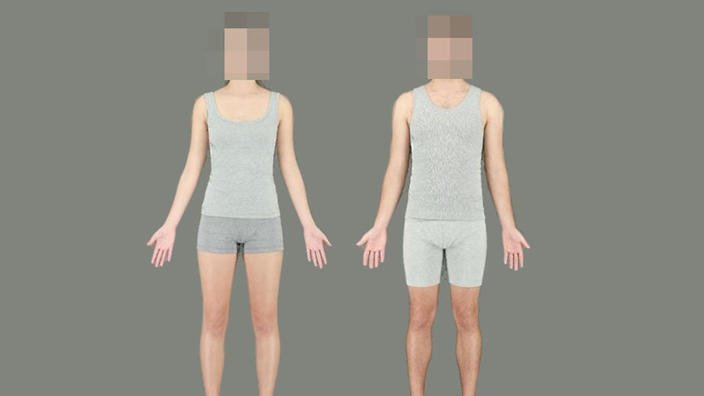The development of science, engineering and medicine is an experimental process, one that involves developing standards and reference models. For centuries, the young, able-bodied, white male, in most cases having a North American or European lifestyle formed the basis of these standards. This universalisation of the human race, based on a one-size-serves-all model is exclusionary and doesn’t consider anthropometric differences between different sexes, races and ethnicities.
Since these standards form the basis of knowledge production, design, and testing hypothesis, any biases will lead to products and theories that are not just biased but also inadequate. Standards thus need to be established keeping in mind all the stakeholders and the inputs they can offer to the research
The reference model is seen as the norm, and any group that falls outside it, as deviation from the norm.
When questions of unproductivity and discomfort are disregarded, far-reaching consequences of standardisation are overlooked. While seemingly inconsequential standardisation – like the height of cabinets, door pegs, luggage racks in public transport – creates situations of dependency, exclusive reference models also have far graver consequences as seen in the case of car designs, where women and smaller men are seen as ‘out of position drivers‘ due to the distance between the pedals and the seat.
This exclusion also leads to oversights on basic necessities. When Apple launched its AI, Siri could find prostitutes and Viagra suppliers, but not abortion providers. Similarly, maps can point out the fastest routes, but not the safest. The universalisation of male bodies has also led to the gender data gap. D
Let’s look at different instances of biased designs seen on a day to day basis.
1. Work Space Temperatures
In the 1960s, the metabolic resting rate of the average man determined the standard office temperature. However, a recent Dutch study found that the study may have overestimated the standard. Women’s metabolic rate is higher by almost 35%, as compared to an average man; amounting to temperatures being set 5 degrees lower than what their bodies are designed for. In the larger context, it may seem like an inconsequential instance of
2. Smartphones And Other Gadgets
The size of the smartphone has been increasing progressively, standing at an average of 15.97 cm presently. A study in the Egyptian Journal of Forensic Studies found that on an average male hand sizes are 1.3 cm larger than those of women. It is this difference in sizes of hands that causes most women discomfort while using smartphones with one hand. In an instance, a research student talks about how she was unable to use her Google Nexus to take pictures with one hand to document the use of tear gas in the Gezi Park protests in Turkey. Evidently, the usage of smartphones has progressed beyond personal use and disproportionate designs end up hampering women’s work in certain situations.
Also read: Women in Public Spaces: Do Public Spaces Only Belong To Men?
A GlobalWebIndex study in 2015 showed that women are more likely to use the iPhone than men. For a company whose biggest consumers are women, it is fairly shocking to see the size of the latest phone size go up to 14.73 cm, especially because the usage of the smartphone has moved beyond personal use.
Voice recognition software are also designed keeping in mind the pitch of a man’s voice. Additionally, many voice recognition devices only recognise certain accents, primarily European and American. For instance, a research fellow at the University of Washington found, that Google’s speech recognition software was 70% more likely to accurately recognise male speech. Voice-command systems in
3. Car Crash Dummies
In 1949, when the U.S Air Force first developed test dummies, those representing women’s bodies were not included due to women’s exclusion from combat roles at the time. The same bias followed when test dummies were developed for civilians. It wasn’t until the 1970s when European automobile companies started losing market shares due to their “made-to-fit-one” designs, that research on different body types was included. In 1996, the first pregnant crash test dummy was engineered at the University of Michigan Medical Center, with General Motors and the National Highway Traffic Safety Administration (NHTSA), which took into consideration the anthropometrics of pregnant women, while testing for safety.
Soon women and other populations were taken into consideration while engineering car safety mechanisms. The test dummies used for women, however, were tested only in the passenger seat. Furthermore, they weren’t really designed as female dummies, only as smaller male dummies. So data on how a female driver would be
4. Construction
In India women constitute 51% of the unskilled labour force in construction. Nonetheless, the weight carrying capacities of men’s bodies determine the standard size of cement bags. Additionally, the size of the standard brick is such that it fits a man’s hand more comfortably than it does a woman’s hand. The tools used in construction, like the wrench, are also seen to be too large for a woman’s hands to grip tightly.
Through one entity of the Reference Man, Western Medicine has managed to exclude not just nuances of gender, but also race and ethnicity.
In the UK, it is seen that while safety gears like full body suits and goggles are provided to all workers, they are designed keeping in mind the standard male populations from Europe and the USA. This means that the safety gear is ineffective for most of the female population as well as men from black and other ethnic minorities.
5. Medicine
Mainstream Western medicine has always relied on the male body as a universal body to study human anatomy. The Reference Man invented as a means to simplify calculations is a 25-30 years old Caucasian man, with a Western European or North American lifestyle, weighing 154 pounds, and 5 feet, 6 inches tall.
Prior to the 21st century, female bodies were used only for research and medicine related to the female reproductive system. The drawback of this standardisation is evident from the fact that while work-related cancers in men have reduced, the same
The different immune systems and hormones between men and women play a role in how chemicals are absorbed, which in turn determines the different rates at which each category will react to toxins, which is completely disregarded.
6. Clinical Trials
Whether for Cardiovascular, endocrine changes or cancer studies, the number of women used in clinical trials is far less than the number of men. Studies have shown that the effect of diseases is different in case of men and women at all stages, from symptoms and risk factors to outcomes. Even in cases where women participants are included in the clinical trials, the results of the study are not reported based on gender and sex. This is true even for studies on anxiety and depression, less than 45
When man’s life, for centuries, is represented as human life, an entire perspective, is missing in human history. This gap of gendered data is seen in all spheres, whether science, literature, city planning, technology or engineering.
Also read: Aditi Ashok: A Reminder Why Golf Is Not Just A Man’s Sport
Gendered Innovation is now being taken more seriously, as non-standard and more inclusionary models are being taken into consideration in the formulation and design stage in all fields. However, as seen in cases like medicine, creating workable data would take an entire working generation, but as they say, better late than never!
Author’s edit: The article contains references to the piece published by The Guardian (which is also an edited extract of Caroline Criado Perez’s Invisible Women)
Featured Image Source: SBS
About the author(s)
Dhwani is an architect, writer and assistant professor at Balwant Sheth School of Architecture, NMIMS. She has an MA in Women’s Studies and identifies as a professional dog-cuddler.




